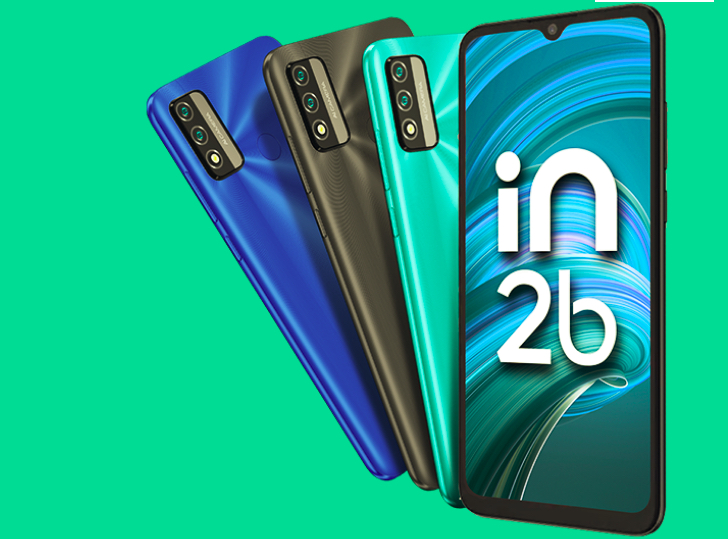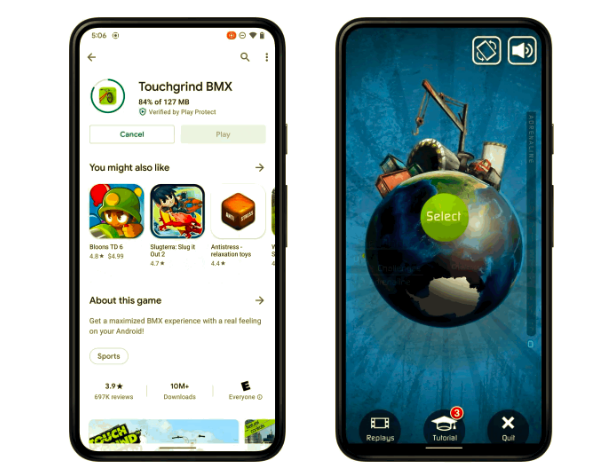If there’s one dramatic change that has happened in the phone world over the last decade, it’s the transformation from small-screened, keypad devices to full-screen touch. However, whatever you may think of the current trend for out-sized screens, the human hand hasn’t changed in size and, unsurprisingly, there is a ‘sweet spot’ for our pocket brains. Yes, you can have fun with a Galaxy Note 3, but hold the Galaxy S III, S4, Galaxy Nexus, Nexus 5 or this, the Motorola Moto G, and most people will feel right at home. The size, the curves, the materials – the big ‘M’ has hit the nail squarely on the head. Add in astonishing value for money and the Moto G has to be taken very seriously indeed – if not for you, the tech enthusiast reading Android Beat, then for your friends and family.


The Motorola Moto G – astonishing value for money… and stock Android to boot….
I have to start with the last point first. Only two weeks ago, I was pronouncing the £300-ish LG-made Google Nexus 5 as superb value for money – which it still is, considering the almost flagship specifications. Yet the Motorola Moto G, also running what is effectively stock Android, makes the Nexus 5 look overpriced. Which is – as I say – astonishing.
Quite how the Moto G makes the Galaxy S4s and HTC Ones of this world look, with their near £500 starting prices, I leave to your own imagination and hyperbole. For the average smartphone user, not perhaps needing the very best camera, the very fastest processor or the most storage, why spend three times the price on something that’s arguably only a little better? The Motorola G runs at a fair lick, seems to have plenty of headroom for most apps and games, and is a quality piece of kit with comparatively few omissions.
Hardware
It’s your typical 2013 black touchscreen slab, of course, with slightly rounded corners and, relatively speaking, quite a large bottom bezel. This is the first of the cost-cutting measures – none of which are showstoppers, but all worth mentioning as I go along – despite the near-Galaxy S4 dimensions, the 720p screen’s smaller at a ‘mere’ 4.5”. Still, there’s nothing shoddy about the screen itself, bright and colourful and with contrast almost up with the Nexus 5, remaining visible to some extent even outdoors in the sun.


Screen contrast is very decent, remaining visible to some degree even when battling with sky reflections…
The Moto G is, to quote Apple about its iPhone 5c, ‘unashamedly plastic’, but feels very solid in the hand, with no creaks whatsoever. The size is perfect, with power/screen button top right, as is traditional these days (unless you have an iPhone or HTC device) and volume rocker beneath. MicroUSB on the bottom, 3.5mm up top and that’s your lot.


The textured and grippy back cover, helped by the Motorola ‘dimple’…
The solidity belies the fact that the back of the Moto G is removeable, for switching from the black here to over a dozen coloured alternatives. With the back off, the battery is revealed – “great, this gets better and better, the facility to swap or replace batteries”, you think.
Except that you can’t. Quite inexplicably, the battery is covered with a big sticker: “Battery not user removable”. In five languages (just in case). It’s tempting to get a screwdriver out and try levering the cell, but maybe that would break some fragile ribbon cable (or similar) so I didn’t try it. I can only think that the original intention was to have the user able to swap batteries but that some mechanical or electrical issue got in the way and the plan was shelved. All very odd, though. All that plastic clippery only to not have battery access after all. Just a small slot for your microSIM card.


The exposed battery that you can’t…. actually…. remove!
Oh, and being able to swap on a differently coloured back. Whoopee-do. Actually getting the back off is a bit fiddly and needs a strong fingernail, starting from the microUSB port, but thankfully it all clips back together more easily and is just as solid afterwards.
On the (incredibly subtly) textured back is an indented Motorola logo, a trivial design point that works really well because your index fingertip naturally seeks this out as a place to rest and support the phone – and it’s well away from the relatively precious camera glass. This last is slightly recessed anyway, plus there’s an LED flash and a surprisingly loud mono speaker.
As some people have pointed out, cheaper phones often have better speakers because they don’t aim to be an insanely thin as possible and therefore have more room for a speaker component and any necessary audio cavities. Some tech pundits don’t give much importance to speaker volume or quality, but whether it’s taking a speakerphone call, listening to sat-nav instructions in the car or podcasts round the house while doing chores, a weedy speaker is an intense annoyance for many users and a decently loud one – as on the Moto G – is a huge relief. Well done, Motorola.


Back off, exposing 14 screws, plus microSIM slot…
Inside the Moto G are internals from flagships from roughly a year or so ago, a 1.2GHz Quad-core Snapdragon 400 with 1GB of RAM, over 400MB of which is free after booting, so there’s just about room for Android 4.3 here to breathe, at least with typical use from the target end user. Also typical for this user might be a casual attitude to storage, which is just as well since many Moto G’s come with 5GB free out of the box, while the 16GB version has 13GB free. Hardly a lot in these days of 1GB games, sideloaded or bought movies and music favourites though, not to mention captured videos.
One thing I noticed while the Moto G’s back cover was off (other than the sadly sealed battery) was the fourteen (count ‘em!) tiny Torx screws holding the device together. This is typical Motorola over-engineering, but the visibility of these screws does mean that, once they’re removed, the entire device will be exposed and repairable. Hopefully. There might even be a decent chance of swapping out that pesky battery with a bit of luck. (This being a review device, I didn’t want to try this and risk damaging it of course!)
Stock Android


The default lockscreen, plus the second page of the applications menu – note the ever-expanding Play empire from the big ‘G’, plus the welcome inclusion of Quickoffice.
The Android experience is almost completely ‘stock’ (i.e. as on a Nexus running the same version of the OS), with just a few Motorola application additions. Assist uses Calendar and time rules to silence the phone, with a few exceptions that you can enable, such as specific numbers for incoming calls and responding to any number calling twice in 5 minutes (e.g. because there’s an emergency). It’s a small application, but useful to set up and forget, especially if it gives you an uninterrupted night’s sleep.


Motorola Assist triggers off Calendar meetings and time settings to keep you undisturbed…


…but there’s provision for anything really important to break through…
Motorola Migrate is the sort of thing we’re seeing more and more of these days, a manufacturer utility to handle the transfers of your text messages, call history, SIM contacts, photos and some settings from one device to another. In this case, from an older Android phone to this one – there’s no support for coming in from another platform, sadly. Other content types, such as main contact and calendar, will come in via standard Google and other account syncs, of course – Migrate just fills in the gaps around the Google sync and restore.


Motorola Migrate aids the transfer of data miscellany from previous Android phones…
Otherwise everything’s very familiar on the Moto G, with five homescreens (no, you can’t add more), shortcuts, folders of shortcuts, a dock, a swipeable main application menu, all bog-standard, plus the ubiquitous on-screen Android virtual controls. It’s enough to warm the cockles of this old Nexus fan’s heart…..


Stock Android means welcome virtual controls that get out of the way when not needed…
Seeing Messaging as well as the newer Hangouts system was a little odd – but perhaps Motorola left the older application in as something more familiar to new users – though quite what will happen to Messaging when Android 4.4 Kitkat hits the Moto G in a month or two is anyone’s guess.


Stock Android multitasking, plus the main homescreen, here showing both Messaging AND Hangouts…
Imaging and media
Just about the only thing which isn’t stock Android is the Camera application – it’s a custom Motorola UI, based around swipe gestures. From the left for the five main settings (HDR, Flash, focus mode, slow motion video effect and panorama), from the right for the photo gallery, up and down (Nokia-style) for digital zoom.


The Camera UI revolves around this left hand slide-out set of toggles/modes…
The default focus mode involves auto-focus, all the time, and a single tap anywhere on the screen takes the shot – probably a good idea for smartphone newbies, though anyone who knows what they want will want to switch it so that a focussing reticule can be dragged around the scene to set specific focal points and exposures.


The more advanced of the two focussing modes…
Photo quality’s mediocre, as you might perhaps have predicted, given the price point being hit here, but it’ll do for most people with unadventurous or unambitious needs.


HDR comes, as on the Nexus 5, as perhaps the best option for many people. This shot of leaves was in overcast conditions, hence the muted colours!


Indoor shot, bright artificial kitchen light….


The auto-focus often gets things wrong, here determined to focus on the background…


The typical ‘moving person party shot’ – LED flash doesn’t really cut it for shooting humans, but it’s no worse than any other LED-equipped camera phone.


Typical night shot – the shutter is allowed to stay open for seconds at a time, which is unusual. And even then, not enough light is gathered…
Video’s only captured at 720p, a good fit for the screen resolution here, but the lack of 1080p capture in late 2013 is another indication that the camera hardware is relatively old. Or cheap. Or both. [There will be video capture samples in the video at the end of this review in due course.]
Media playback is competent and looks decent enough on the bright LCD screen and fairly loud speaker, though Motorola hasn’t pushed the boat out in terms of buying in extra codecs – you get the basic MP4 support built into Android and that’s your lot.


Many video formats outside the most common MP4 variants aren’t handled properly…..
Still, it’ll do for most people, plus the limited 5GB/13GB storage (depending on model) will stop users sideloading much media in the first place. Streaming solutions such as YouTube (supplied) and Netflix (in the Play Store) will be the order of the day. 3.5G will suffice here though as usual I’d recommend Wi-fi be used instead since, again, target Moto G users won’t be made of money and probably have capped data tariffs. There’s no LTE support here – but again this is unlikely to be an issue for the typical user, for exactly the same reason.


The Moto G booting up… nice logo, but don’t worry, stock Android is only a few seconds away….
Verdict
How you view the Moto G depends entirely on your perspective. On the whole in the tech world, you get what you pay for, a rule bent by premium pricing by the likes of Apple (e.g. the aforementioned iPhone 5c) and, here, bent in the opposite direction by Motorola. I handed the Moto G to a number of smartphone users and let them have a play. Estimates of how much it cost varied from £200 to over £300 – when I revealed a price south of £150 all-in there were dropped jaws.
The Moto G is the perfect first Android smartphone to recommend to family or friends. There’s no carrier or manufacturer bloatware, no duplication of functions, no weird gestures or swipes or systems to learn or fiddle with. It’s robust (Motorola claim ‘water repellent’, so perhaps splash proof at most), simple, does the basics perfectly and doesn’t cost the earth to buy or replace.
If the ‘G’ has a weakness then it’s in the internal storage – I can see even new users filling 8GB in fairly short order with games, music and captures – so always recommend the 16GB version if it’s available in your market.



















